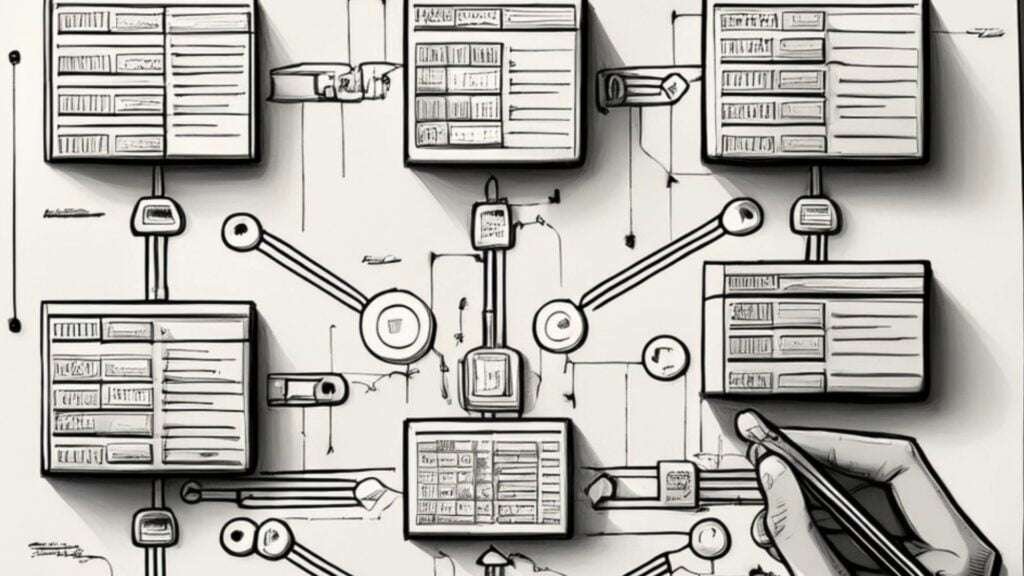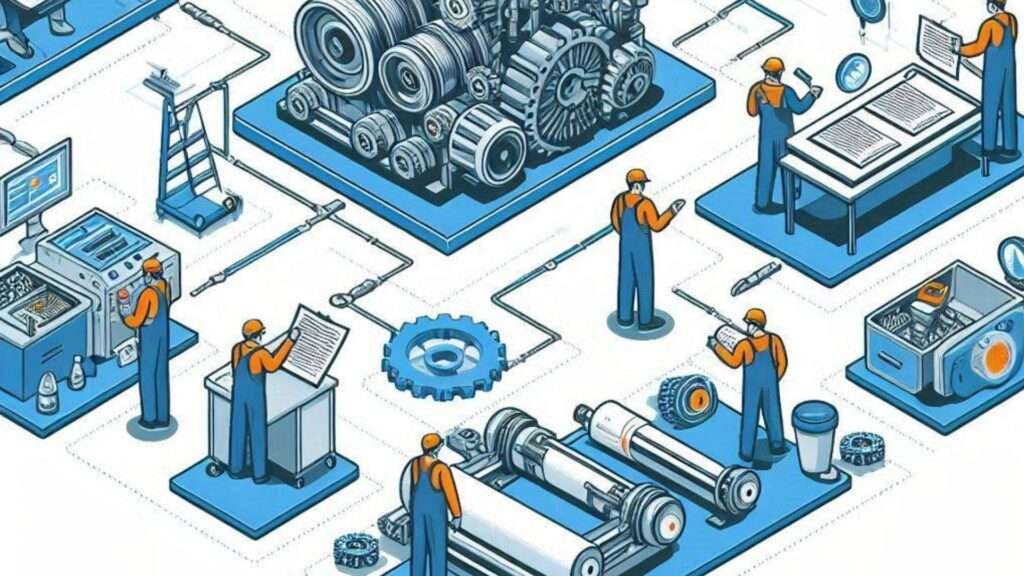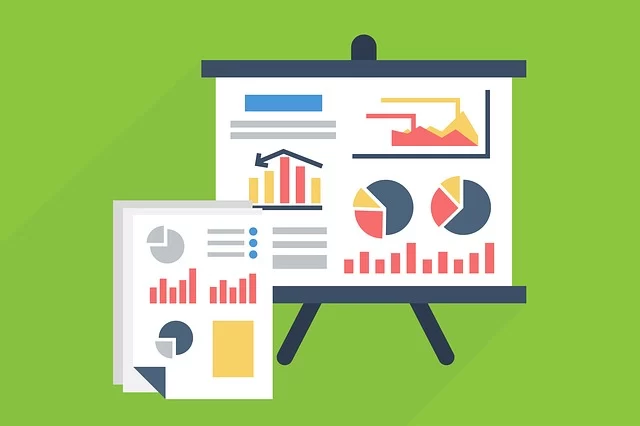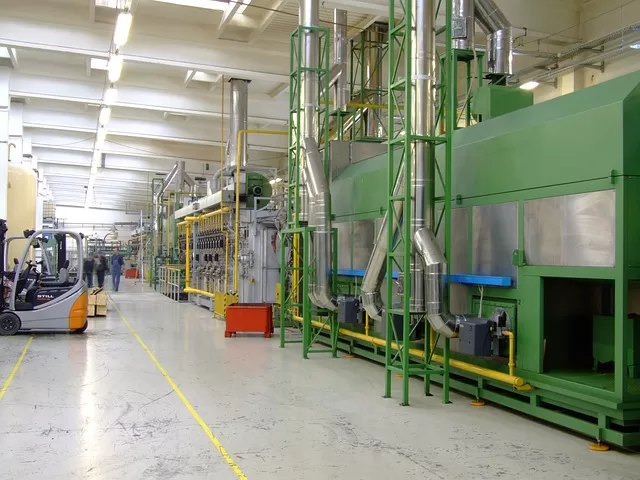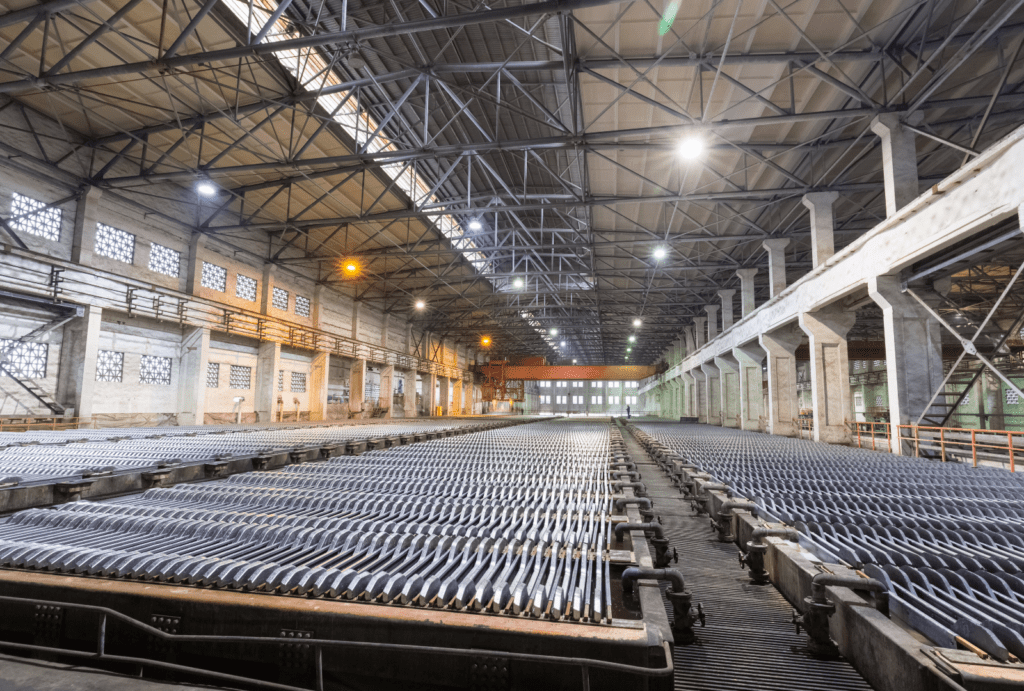Interfacing Disparate Systems Data With Your CMMS Via AVEVA PI.
Interfacing disparate systems across your organization with a Computerised Maintenance Management System (CMMS) is more than just a technical enhancement; it is a strategic initiative that can greatly improve organizational efficiency.
By dismantling data silos, streamlining maintenance processes, and enhancing overall data connectivity, businesses can create a seamless flow of information that is vital for proactive decision-making.
Effective multi-system interfacing consolidates various data sources, providing a coherent and comprehensive overview of maintenance operations.
This unified data environment simplifies data management and ensures that all relevant stakeholders have access to accurate and timely information.
When company data from different systems is interfaced into a central CMMS, it offers a holistic perspective that can reveal hidden inefficiencies and opportunities for improvement. This leads to better resource management and optimized maintenance schedules.
Interfacing disparate systems with your CMMS enhances data connectivity. Real-time data transfer between linked systems guarantees that any changes or updates are immediately reflected across all relevant platforms.
This level of connectivity is crucial for predictive maintenance strategies, where timely data is essential for anticipating and preventing equipment failures.
Seamless interfacing not only enhances the reliability of maintenance operations but also extends the lifespan of critical assets.
The benefits of interfacing your CMMS with other systems also extend to improved decision-making processes.
With all data centralized and easily accessible, maintenance managers can make informed decisions based on comprehensive and up-to-date information. This comprehensive view supports strategic planning and forecasting, leading to more effective long-term maintenance strategies.
In summary, interfacing disparate systems with your CMMS is a powerful approach to enhancing organizational efficiency. By breaking down data silos, streamlining processes, and fostering better data connectivity, businesses can leverage their CMMS for a more holistic and proactive maintenance management strategy.
Table Of Contents:
1.0 Collect, Cleanse And Centrally Interface Your Data with AVEVA PI.
2.0 Enrich and Maximize Your Asset Data with the AVEVA PI System.
2.1 Predictive Maintenance.
2.2 Condition-Based Monitoring.
2.3 Data Enrichment.
2.4 The Benefits of Data Enrichment.
3.0 Revolutionise Your CMMS with the Power of Interfaced Data.
4.0 Challenges & Solutions With Centrally Interfacing All Systems.
4.1 Technical Challenges.
4.2 Operational Challenges.
4.3 Organisational Challenges.
5.0 Future Trends in Centrally Interfacing Data With A CMMS.
6.0 Conclusion.
6.1 Seamless Connectivity.
6.2 Comprehensive Understanding.
6.3 Operational Excellence.
6.4 Strategic Advantage.
1.0 Collect, Cleanse And Centrally Interface Your Data with AVEVA PI.
The AVEVA PI System serves as a robust solution for the meticulous processes of data collection, cleansing, and centralization.
This sophisticated system efficiently gathers asset data from multiple sources, creating a comprehensive view of asset performance and health as follows:
1. Data Collection: AVEVA PI interfaces various data streams, including sensor outputs, manual entries, and legacy systems, ensuring no critical information is overlooked.
2. Data Cleansing: The system employs advanced algorithms and validation mechanisms to filter out anomalies and errors, enhancing data integrity and reliability. This process significantly reduces the risk of erroneous insights, thereby improving operational reliability.
3. Data Centralisation: By converging data into a single, easily accessible platform, AVEVA PI eliminates inefficiencies associated with disparate data silos. This centralized database facilitates seamless data sharing and collaborative analysis, fostering a more informed decision-making environment.
4. User-Friendly : The system’s intuitive s and advanced analytics tools empower users to derive actionable insights with ease.
Incorporating AVEVA PI into your asset management strategy offers five clear benefits:
1. Enhanced data reliability.
2. Improved overall data usability.
3. Better-maintained assets.
4. Reduced downtime.
5. Optimized asset performance.
By transforming raw asset data into valuable intelligence, AVEVA PI drives more effective and efficient asset management practices.
2.0 Enrich and Maximize Your Asset Data with the AVEVA PI System.
The AVEVA PI System significantly elevates the utility of asset data through advanced analytics and sophisticated data enrichment techniques.
By interfacing data streams from various sources, this system transforms disparate data into actionable insights, supporting predictive maintenance and condition-based monitoring strategies.
These advanced methodologies enable organizations to anticipate potential asset failures, optimize operational efficiency, and extend the lifespan of their assets.
2.1 Predictive Maintenance:
Predictive maintenance, powered by AVEVA PI, leverages historical and real-time data to forecast equipment failures before they occur.
This proactive approach decreases unplanned downtime and reduces maintenance costs.
For example, vibration analysis data from rotating machinery can be continuously monitored; any deviation from the norm triggers alerts, enabling timely interventions before minor issues evolve into significant failures.
2.2 Condition-Based Monitoring:
Condition-based monitoring involves tracking the actual performance and condition of assets in real-time.
This method ensures maintenance activities are performed only when necessary, rather than on a fixed schedule.
For instance, by evaluating temperature, pressure, and throughput metrics, the system can provide insights into the optimal operating conditions of a compressor, suggesting maintenance only when performance starts to degrade.
2.3 Data Enrichment:
The data enrichment processes intrinsic to the AVEVA PI System further enhance asset management.
By contextualizing raw data through semantic models and advanced algorithms, the system reveals patterns and correlations that were previously obscured.
One practical example is the interfacing of environmental data with operational statistics.
This combination can highlight how external factors, such as ambient temperature and humidity, affect asset performance, thereby informing better decision-making regarding operational adjustments or asset placements.
2.4 The Benefits of Data Enrichment:
1. Higher Asset Reliability: By transforming raw data into precise, valuable insights, organizations can markedly improve their asset management strategies.
2. Increased Operational Efficiency: Advanced analytics and data enrichment capabilities ensure higher operational efficiency and significant cost savings.
3. Maximised Asset Lifespan: Predictive and condition-based maintenance strategies help in extending the lifespan of critical assets by preventing failures and optimizing performance.
By embracing these advanced analytics and data enrichment capabilities, companies can ensure higher asset reliability, increased operational efficiency, and significant cost savings.
The AVEVA PI System’s ability to turn vast amounts of raw data into actionable insights empowers organizations to markedly improve their asset management strategies.
3.0 Revolutionise Your CMMS with the Power of Interfaced Data.
Effective maintenance management is crucial for ensuring operational efficiency and extending asset longevity.
By leveraging the power of centrally interfaced data, a Computerized Maintenance Management System (CMMS) can be transformed, offering unparalleled insights and streamlining maintenance processes.
The interfacing of disparate data sources, such as those provided by the AVEVA PI System, paves the way for data-driven solutions that significantly enhance maintenance strategies as follows:
1. Empowering Decision-Makers: One of the primary advantages of interfacing data with a CMMS is the ability to empower decision-makers with concrete, real-time information.
a. This interfacing enables a comprehensive view of asset performance and health, fostering well-informed, data-driven decisions.
b. For example, anomalies or patterns identified through consolidated data can alert maintenance teams preemptively, allowing for proactive measures and minimizing unexpected breakdowns.
2. Optimized Maintenance Planning & Scheduling: Interfaced data also facilitates optimized maintenance planning.
a. By unifying data from various sources, maintenance schedules can be refined to align with actual equipment conditions rather than relying solely on time-based or reactive maintenance.
b. This precision in planning leads to better utilization of maintenance resources, reduces unnecessary interventions, and extends asset lifecycles by ensuring that equipment is serviced only when genuinely needed.
3. Improved Asset Lifecycle Management: Continuous monitoring and analysis of asset performance indicators through interfaced data contribute to improved asset lifecycle management.
a. Organizations can determine the most cost-effective times for asset replacement or upgrades, maximizing return on investment and avoiding premature capital expenditures.
b. This approach ensures that assets are maintained at peak performance levels throughout their lifecycle.
4. Enhanced Operational Efficiency: The seamless flow of information facilitated by interfaced data enhances overall operational efficiency.
a. Maintenance teams gain access to a wealth of contextual information, transforming how they respond to issues and perform their tasks.
b. This leads to better resource allocation, reduced downtime, and an increased ability to meet production targets.
The synergy achieved via interfacing all disparate data with your CMMS acts as a catalyst for driving significant improvements in maintenance and operational management.
As organizations continue to confront growing operational complexities, the ability to consolidate and utilize data effectively becomes indispensable for maintaining a competitive edge and achieving sustained excellence.
By embracing interfacing data solutions like the AVEVA PI System, businesses can revolutionize their CMMS, leading to enhanced maintenance practices, empowered decision-making, and optimized asset performance.
4.0 Challenges & Solutions With Centrally Interfacing All Systems.
Using AVEVA PI to interface disparate systems with your CMMS often presents several challenges spanning technical, operational, and organizational dimensions.
Addressing these challenges effectively is crucial for a successful interfacing process.
4.1 Technical Challenges:
1. Data Compatibility: One of the foremost technical challenges is data compatibility. Organizations frequently grapple with disparate data sources, each with unique formats and schemas. This incompatibility can lead to data silos and inefficient workflows.
· Solution: To surmount data compatibility issues, organizations should adopt data normalization practices. Standardizing data formats and employing robust middleware solutions can facilitate seamless data exchange between the AVEVA PI System and CMMS. Additionally, leveraging Application Programming s (APIs) can create a more flexible interfacing framework, allowing for efficient data flow and exception handling.
4.2 Operational Challenges:
1. Operational Disruptions: Potential disruptions to ongoing operations during the interfacing process are significant concerns. These disruptions can stem from system downtime or the need for extensive employee training.
· Solution: Phased implementation is advisable to mitigate operational disruptions. By rolling out the interfacing in controlled stages, organizations can monitor performance, identify issues early, and adapt strategies as needed. This approach minimizes downtime and ensures a smoother transition.
2. Employee Training: Ensuring that all relevant personnel are well-versed in both systems is critical to prevent missteps and enhance operational efficiency.
· Solution: Comprehensive training programs, including hands-on sessions and ongoing support, are essential. These programs should cover all aspects of the new systems and provide continuous learning opportunities to address emerging issues.
4.3 Organisational Challenges:
1. Resistance to Change: Organizational hurdles often involve resistance to change and poor stakeholder engagement. Without proper management, these issues can impede the interfacing process.
· Solution: Effective change management is crucial. Clear communication of the benefits and objectives of interfacing AVEVA PI with your CMMS can foster stakeholder buy-in. Involving stakeholders in the interfacing process through regular updates and feedback loops can enhance acceptance and smooth the transition.
While interfacing all software solutions via AVEVA PI to your CMMS may present a range of challenges, a strategic approach that includes data normalization, phased implementation, robust training, and effective change management can facilitate a smooth and successful interfacing process.
By addressing these common challenges proactively, organizations can harness the full potential of their interfaced systems, leading to improved maintenance practices, enhanced operational efficiency, and better decision-making capabilities.
5.0 Future Trends in Centrally Interfacing Data With A CMMS.
The landscape of Computerized Maintenance Management Systems (CMMS) and data interfacing solutions is rapidly evolving, driven by technological advancements that promise to revolutionize asset management and maintenance strategies.
Key trends shaping the future of data interfacing with a CMMS:
1. Real-Time Monitoring and Data Collection: The interfacing of real-time monitoring and data collection technologies is one of the most significant trends in the CMMS landscape.
a. These technologies enable continuous tracking of asset performance, facilitating more precise predictive maintenance and reducing unplanned downtime.
b. As real-time monitoring devices become more prevalent, their data contributions will increase, necessitating more sophisticated data management and analytics capabilities.
2. Artificial Intelligence (AI) and Machine Learning (ML): AI and ML are showing immense potential in enhancing the functionality of CMMS.
a. AI-driven analytics can identify patterns and anomalies in large datasets that human analysts might miss, offering insights that improve maintenance scheduling and resource allocation.
b. For predictive maintenance, machine learning algorithms can establish maintenance needs based on real-time and historical data, thereby extending asset lifecycles and optimizing performance.
3. Advanced Data Interfacing Platforms: The seamless interfacing of disparate data sources through advanced data interfacing platforms is another emerging trend.
a. Systems like AVEVA PI exemplify how diverse datasets from various equipment and sensors can be aggregated and analyzed in real time.
b. Such platforms provide a holistic view of asset health and performance, facilitating better-informed decision-making processes within organizations.
4. Cloud Computing: Advancements in cloud computing are enabling more flexible and scalable data interfacing solutions.
a. Cloud-based CMMS platforms support remote access to critical data, enhancing operational agility and collaboration.
b. This capability is crucial for organizations with geographically dispersed assets, ensuring that all stakeholders can access up-to-date information regardless of their location.
5. Predictive and Prescriptive Maintenance: The potential impacts of these trends on maintenance strategies and asset lifecycle management are profound.
a. Predictive maintenance, powered by AI and real-time monitoring technologies, will likely become the norm, shifting away from traditional reactive maintenance strategies.
b. Prescriptive maintenance, which not only predicts when maintenance should be performed but also prescribes specific actions, is also gaining traction.
c. These approaches promise to reduce maintenance costs, enhance asset longevity, and improve overall operational efficiency.
The future of CMMS and data interfacing is marked by the inclusion of real-time monitoring, AI and ML, advanced data platforms and cloud computing.
These trends are set to transform how organizations manage and maintain their assets, leading to more efficient, cost-effective, and reliable operations.
By embracing these innovations, companies can stay ahead of the curve, ensuring that their maintenance strategies are both proactive and data-driven, ultimately unlocking the full potential of their assets.
6.0 Conclusion:
Interfacing disparate data systems, such as AVEVA PI, with your Computerized Maintenance Management System (CMMS) offers a transformative approach to asset management.
By harnessing the power of centrally interfaced data within your CMMS, organizations can overcome the challenges posed by siloed information, unlocking the full potential of their assets and optimizing maintenance practices.
6.1 Seamless Connectivity.
Seamless connectivity between AVEVA PI and your CMMS ensures that data flows effortlessly, enabling real-time insights and actionable intelligence.
This interfacing facilitates a holistic view of asset performance, allowing for predictive maintenance strategies that minimize downtime and extend the lifecycle of critical equipment.
Enhanced data accuracy and accessibility lead to improved decision-making processes, fostering a proactive rather than reactive maintenance culture.
6.2 Comprehensive Understanding.
The ability to correlate disparate data sets provides a comprehensive understanding of operational dynamics.
This unified approach supports the identification of underlying issues that may not be evident when data is isolated, enabling more precise root-cause analysis and more effective remedial actions.
6.3 Operational Excellence.
Companies that embrace centrally interfaced data solutions with their CMMS will experience significant enhancements in operational efficiency, cost-effectiveness, and overall system reliability.
The capability to leverage interfaced data systems is not just an advantage but a necessity.
Unlocking the full potential of your assets and data streams through AVEVA PI and your CMMS drives operational excellence and positions your organization favorably in the market.
6.4 Strategic Advantage.
The interfacing of disparate data through systems like AVEVA PI with your CMMS enhances maintenance practices, empowers better decision-making, and ultimately unleashes the full potential of your assets.
Embrace this innovative approach to stay ahead of the curve and achieve unmatched levels of operational success.
By centrally interfacing your data systems with your CMMS, you can ensure that your organization is well-equipped to handle the complexities of modern asset management, leading to sustained excellence and a competitive edge in the industry.

